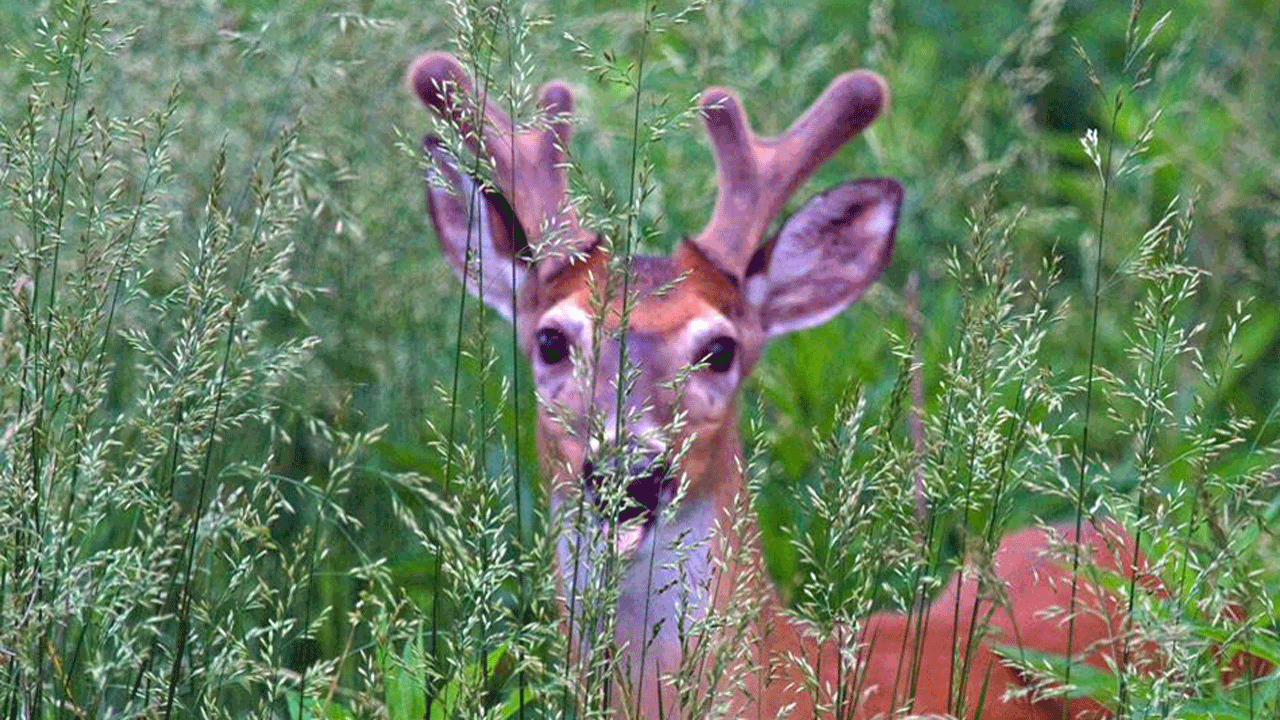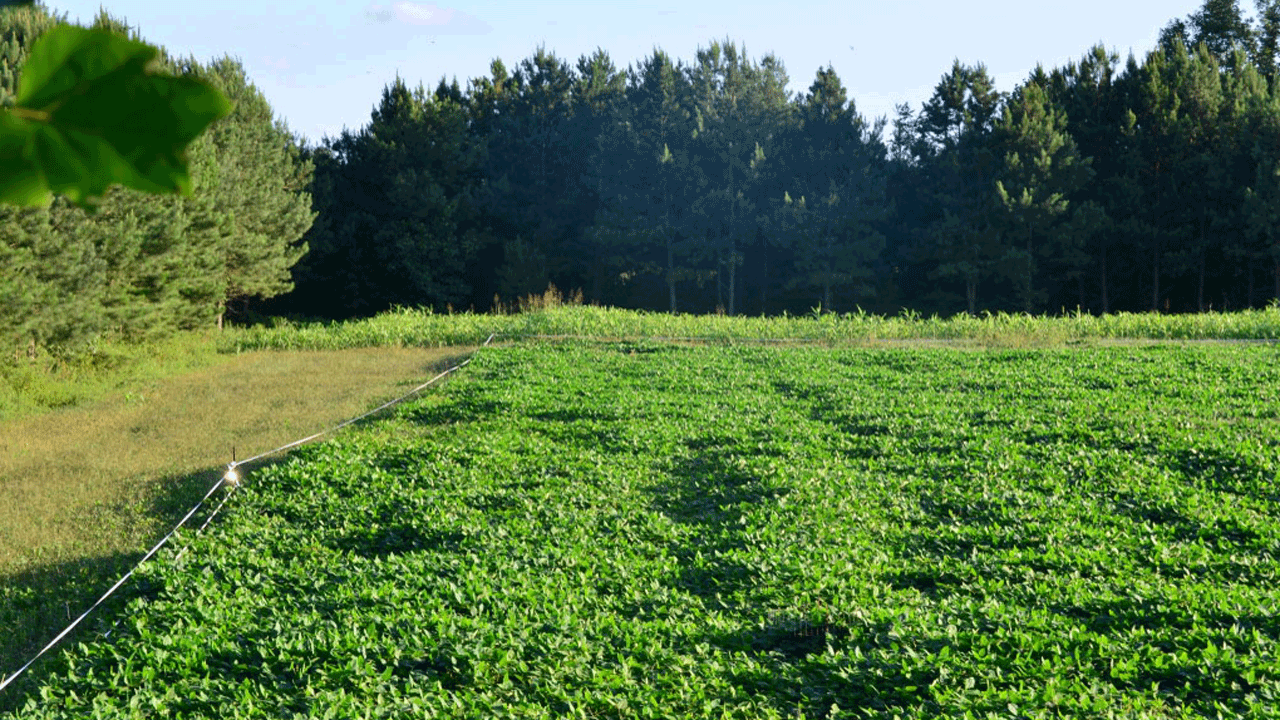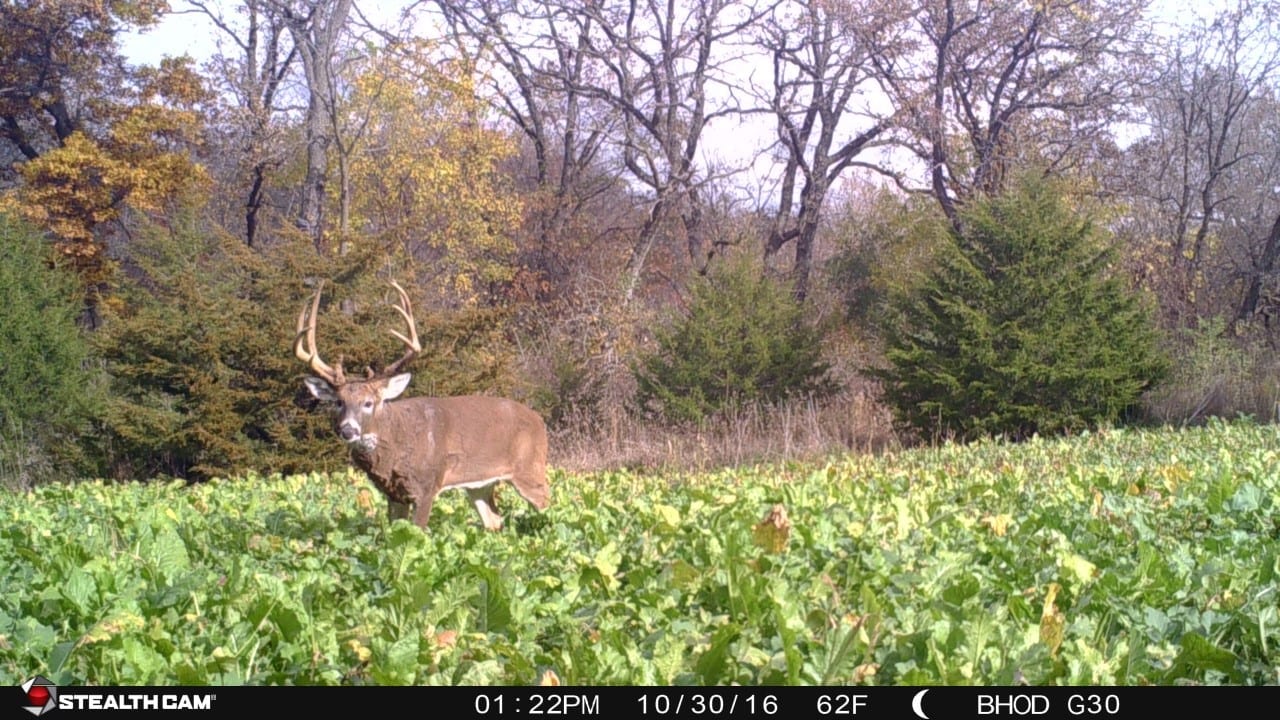Imagine being a high school algebra teacher and walking in to your first day of class and finding out that the majority of your students have been taught that 2+2=8. How far back would that set you?
You learn that instead of being taught grade school math many students chose the route of taking a different class and they chose philosophy as their mathematical foundation. Instead of learning about empirical relationships they studied from the likes of Descartes and believed that the mind could produce whatever answers they coveted. From the high school math teachers’ perspective you would need to spend quite a bit of time “unteaching” them so you could lay the proper foundation for them to move forward in your class.
Welcome to the world of whitetail deer management.

Can you grow big bucks without spending big bucks? (Photo: Bob Howdershell)
The deer hunting world has changed drastically over the last few decades and there is a widening chasm between what many hunters believe to be true and the reality of the natural world. There is a “Descartian” belief that things are different than what is typically observed. It is a problem born out of the marketing world and the age of not only instant information but also of instant misinformation.
I’ll give you a prime example. Many hunters today believe free-ranging whitetail deer are generally sick animals and are in need of our assistance in order to be healthy. They think that whole herds are underperforming because their bodies can not acquire their nutritional needs from the natural environment.
No? You don’t think that’s the main school of thought?
Next time you are amongst your deer hunting friends ask them why they are putting in food plots, why they are maintaining mineral licks on their property, or why they are running deer feeders year-round.
I can almost guarantee you most of the responses you hear will be to grow bigger and healthier deer. Remember, without our help, deer are going to be running around sick and in poor condition.
Of course, that is not the case.

What role do food plots play in your deer management efforts?
Wild animals in areas devoid of humans are typically not struggling to survive. They did not need our help for hundreds of years, so why do we think they suddenly need our help now?
They don’t.
This ‘feeding frenzy’ is a concept that has been created by the hunting industry over the last few decades. To put it bluntly, it was a marketing strategy. It was designed and pushed to make a profit for man, for it certainly wasn’t based on what science tells us free-ranging deer need.
Is it bad?
No… not if it is done right.
Providing food for wildlife through habitat management can absolutely benefit deer but as a whole it doesn’t make them grow any bigger. This is the crux of the 2+2=8 philosophy. When you believe that doing something actually equals more than the true end result.
How do we know the end result?
Multiple studies have been conducted on free-ranging deer to measure the impact of food plots, feeding programs, and mineral supplements. Guess what almost every single study reveals?
No significant impact.
The difference between deer that were offered “man-provided” foods versus deer that feed naturally within their environment is almost immeasurable. Think about that again and let it sink in because not only is it a game changer, it’s a tremendous money saver as well.
Studies of food plots and feeding programs on free-ranging deer often show that natural browse consistently makes up the vast majority of their diet and the added “man-made” foods are only a side dish. Think about it in simpler terms, if a deer is feeding at a salad buffet its entire life and you add a new kind of lettuce, regardless of how healthy it is, is it really going to cause him to explode weight-wise or health-wise? Same thing goes for minerals.

Did this buck grow big because of food plots placed by hunters?
Multiple studies show free-ranging deer almost never lack minerals. These elements are usually found throughout the environment and are only required in trace amounts. Deer typically meet their minimum requirements through the natural foods they eat. It also does no good loading them up with “extra” minerals because their body can’t use them. In other words, they excrete what they don’t use. How many of you who take 50 milligrams of Vitamin C each week believe it’ll help if you up your dose to a half a kilo? Sounds ridiculous doesn’t it?
Ahh…the power of the mind to create a desired outcome.
When all is said and done, no matter how hard you try, in most situations, you are not significantly changing the body characteristics of a free-ranging deer by instituting a feeding program. Odds are you are not going to make them any more than what they have always been.
In other words, 2+2=4 and nothing more.
Believe it or not, though they’re not growing bigger deer, food plots and other supplementation strategies can be incredibly useful management tools and you don’t have to break the bank to do them. They can be small and seasonal, but as long as they are well placed, you’ll reap nearly the same benefits as any other deep-pocketed deer manager.
Now that you understand that additional food and mineral programs are usually not significantly impacting the deer health wise, as in weight and antlers, you can now design your property so they can significantly benefit YOU, the hunter. You can then focus your efforts on where it’s needed most…habitat management as opposed to food management.
We want to hear from you! Do you agree with the author’s theory mentioned above? How do you differ? Comment below and let us know what you think.
(The author is the former Chief of Wildlife and Big Game Program Coordinator for the Tennessee Wildlife Resources Agency.)

 By
By 



